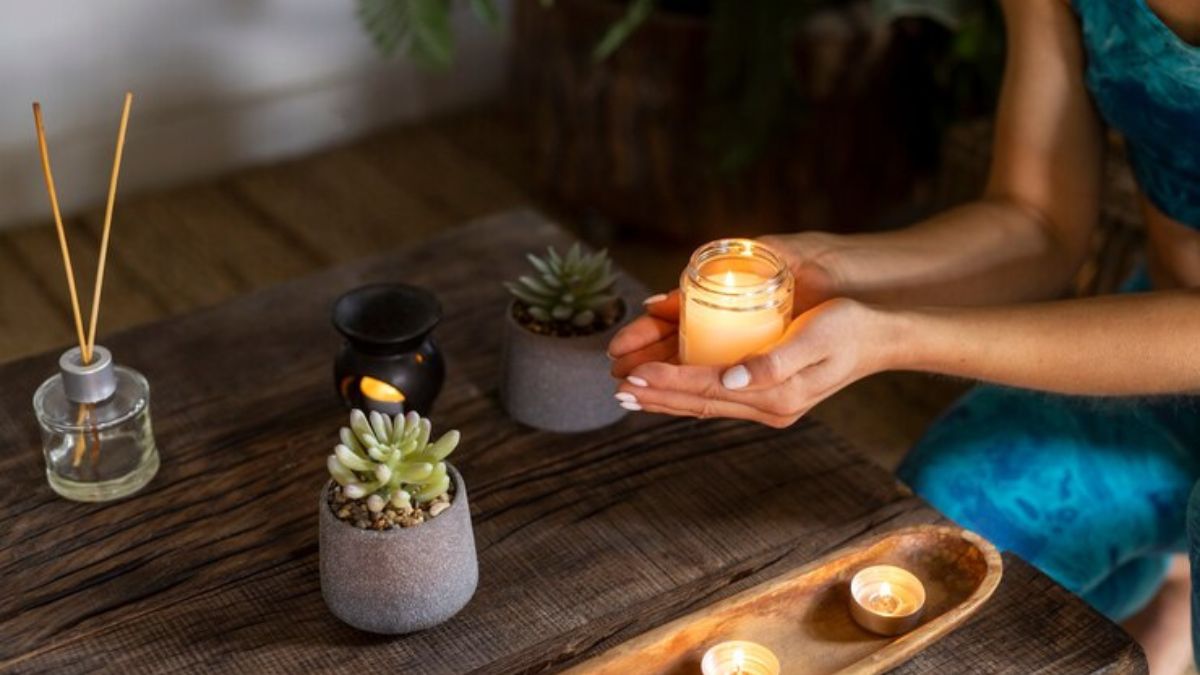After a long and tiring day at work as you step into your home, you are instantly greeted by a comforting scent. The stresses of the day begin to melt away as the familiar fragrance wraps around you, turning your living space into a sanctuary of calm and relaxation. Whether it’s the soothing notes of lavender from a diffuser or the warm glow of a scented candle, home fragrances have the power to transform your mood and your environment. While these scents are meant to bring comfort, it is necessary to know what’s actually in the air you are breathing. Keep reading as Rupal Shabnam Tyagi, Aromatherapy Expert, Perfumer, Organic Skin Formulator & Co-founder, WIKKA guides on how to choose the right fragrance.
What’s the best fragnance ingredient for your home
When it comes to creating a pleasant atmosphere in our homes, understanding the right ingredients in our fragrances is crucial. Not all components used in home fragrances are the same – some offer natural, calming benefits, while others may conceal potential health risks. By learning to read product labels correctly, you can make more informed decisions when selecting home fragrances, ensuring a safer environment for you and your family. Let’s take you through some options:
Essential Oils: When choosing home fragrances, opt for those made with therapeutic-grade healing essential oils like Lavender, Chamomile, Ylang Ylang, Tea tree and others. These high-quality oils provide delightful scents and offer a range of therapeutic benefits, such as calming anxiety, boosting mood, and purifying the air. Their purity and potent healing properties make them ideal for those seeking safe, natural aromas promoting overall wellness.
Also Read: All About Aromatherapy and Essential Oils For Holistic Healing
Botanical fragrances: These are another excellent choice for non-toxic and holistic alternative to synthetic home fragrances. Derived from natural plant materials like flowers, leaves, roots, bark, seeds, and fruits, they contain essential oils, resins, and absolutes that create natural and harmonious blends. These fragrances promote well-being and are eco-conscious, making them responsible for enhancing indoor environments with pure, plant-based aromas.
Scented Candles: If you enjoy scented candles and want to incorporate decorative elements into your space, consider candles made from soy, coconut, or beeswax. These natural alternatives offer a cleaner, longer-lasting burn and are better for indoor air quality. Look for responsibly sourced, cruelty-free options to ensure a sustainable and ethical choice. These materials help reduce exposure to harmful toxins commonly found in paraffin-based candles, making them a safer and more eco-conscious option.

How to choose your home fragrances
When shopping for fragrances, look for certifications or labels that set them apart from other brands. These certifications guarantee consumer safety, ensure quality assurance, and meet globally recognized standards. One important consideration is whether a fragrance company adheres to European norms. Many leading perfume companies follow these regulations, which require rigorous testing of fragrance ingredients to assess potential health risks, allergens, and environmental impact.
Fragrances complying with EU standards are typically free from harmful chemicals, making them safer for consumers and more environmentally friendly. Adherence to European norms often indicates compliance with REACH (Registration, Evaluation, Authorization, and Restriction of Chemicals) regulations, ensuring product safety for consumers and the environment. Another important certification to look for is from the International Fragrance Association (IFRA). IFRA certification enforces strict guidelines on the safe use of fragrance ingredients to protect human health and minimize the risk of allergic reactions, respiratory issues, and skin sensitivities.
Also Read: The Science Behind Scents: Why Aromatherapy Works for Mental Health
Chemicals to avoid in your home fragnances
While some ingredients enhance our living spaces, others can pose risks to our health and well-being. It’s important to be aware of potentially harmful components in home fragrances.
Phthalates: This chemical slows down the evaporation of perfume by making the scent last longer. However, these chemicals can interfere with your endocrine system, which regulates hormones. Prolonged exposure has been linked to reproductive issues and respiratory problems.
Volatile Organic Compounds: Commonly found in air fresheners, candles, and diffusers, these compounds can evaporate into the air and cause headaches, dizziness, and respiratory irritation. Formaldehyde, a common VOC used in synthetic fragrances, is particularly problematic.
Benzene: Also known carcinogen, is emitted by many air fresheners and can irritate the eyes and skin, affecting the central nervous system.
Toluene: This chemical, used as a solvent in synthetic fragrances, can also affect the central nervous system and cause dizziness or respiratory issues. By being aware of these potentially harmful ingredients, you can make more informed choices about the fragrances you bring into your home.
Final Words
Natural alternatives like essential oils and soy-based products provide a safer, more health-conscious way to turn your home into a sanctuary. By avoiding synthetic chemicals and opting for clean, non-toxic products, you can ensure that your home smells good and is safe.

